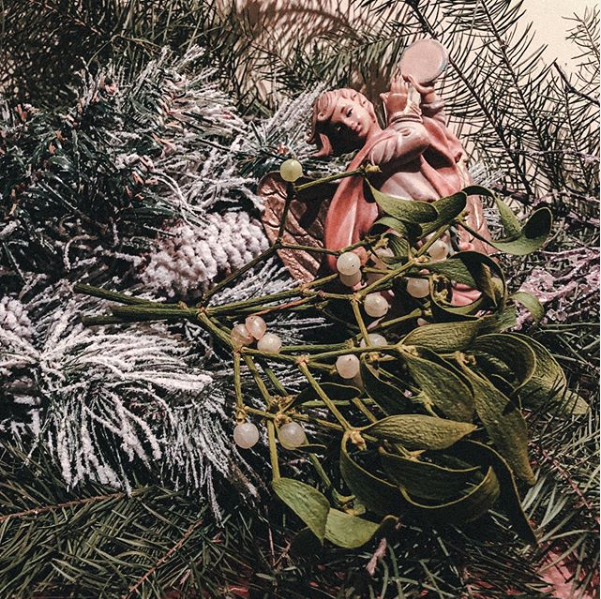3rd Day of Yuletide: Mistletoe
“The Druids held nothing more sacred than the mistletoe and the tree that bears it, always supposing that tree to be the oak….They call the mistletoe by a name meaning, in their language, the all-healing.” - Pliny
It has not been so very long that we have lived as if our lives did not depend on the crops, the seasons and the forces that move determine them. When dark winter reigned, people looked to that which brings life. They looked to the sun deities of rebirth. They looked to the fertile promise of life held within the female form, honouring traditions like mother’s night. They also looked to that which lasts even in the heart of winter. This is where the tradition of bringing the ever-green into the home to deck the halls and the mantle. The holly, ivy, pine, fir and of course, mistletoe. It only makes sense that this sacred all-healing herb of fertility found its way into our modern traditions, without losing its essence of the promise of life. For what does a kiss under the mistletoe represent at its heart? The promise of love, life, and renewal. As a side note, mistletoe wasn’t the only green associated with kissing. In parts of England, there was also a “kissing bush” made from evergreen and holly, and filled with red apples or red paper “roses”.
While popularised as a kissing sprig for the hopeful, it has other folk customs associated with it. In France it is given as a gift on New Year symbolising peace and luck. In Sweden, similar to the Yule log ash, the mistletoe was placed on doors and mantles to protect from lightning. In England it was given to athletes because it held all the distilled “soul” or power of the Oak tree it grew up.
Whether you are decking the halls with sprigs of mistletoe for fertility, for luck, for peace or for strength, remember it is an utterly pagan tradition that remained strong, despite the Church trying to ban it. I would like to think that’s because nobody wants to get rid of a tradition that involves kissing in the darkest time of the year. This was the time of year that the wild revelry of Roman Saturnalia took place after all.

